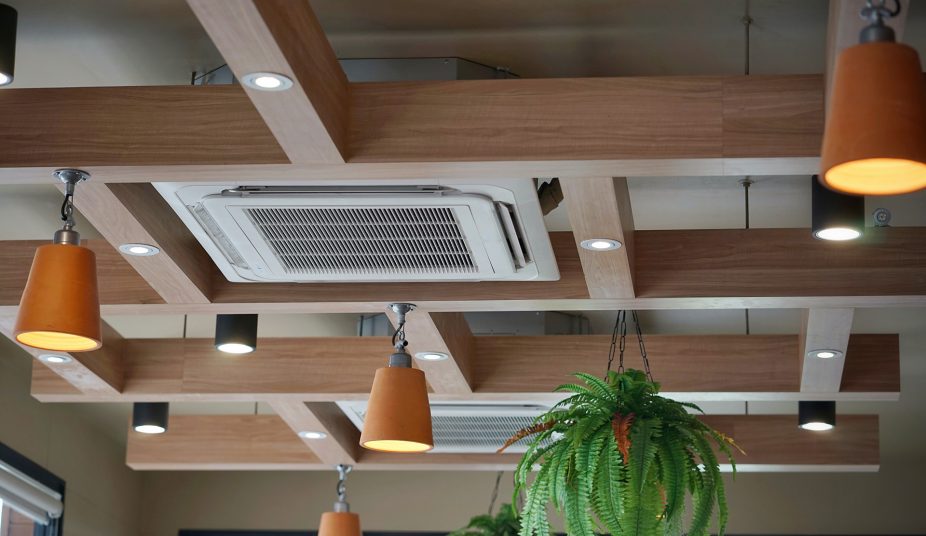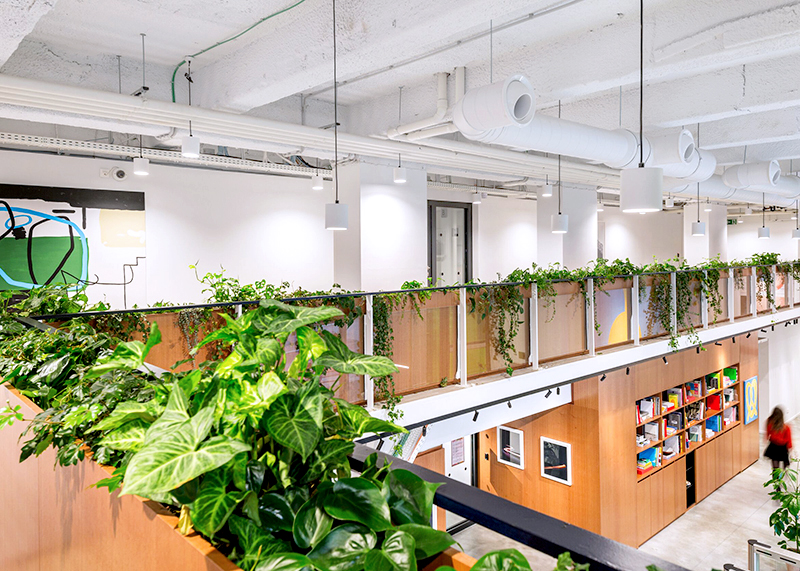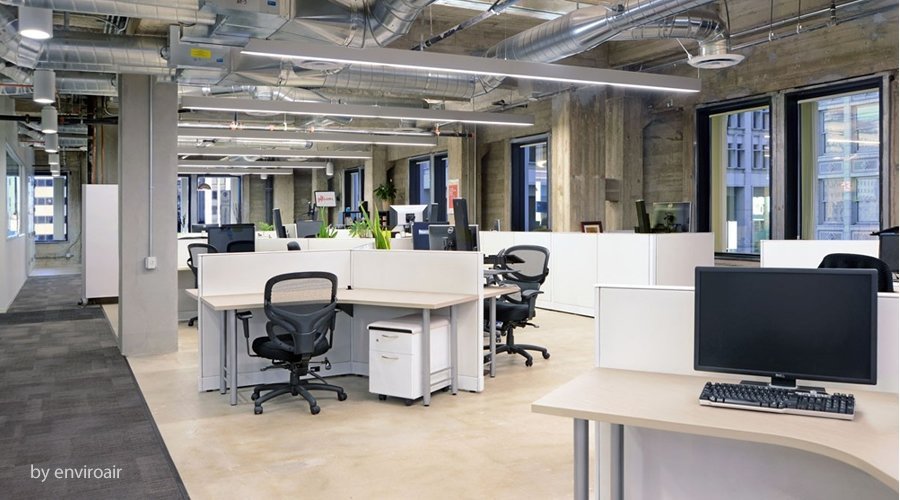Introduction In high-rise buildings, fire safety is of utmost importance. The task of designing effective fire protection systems, including fire

Introduction
Traditionally, office spaces included a ring of offices around the space’s perimeter. Cubical farms then occupied the center. However, in recent years, these spaces have transformed. Nowadays, most firms have adopted an open office layout.
Eliminating perimeter offices increases the amount of natural room entering the building. Also, workspaces are replacing the cubicles to suit certain types of activities. For instance, team lounges are ideal for collaboration. While pods are suitable for quiet concentration.
But how does this shift to modern office buildings affect the design of HVAC systems? Read on to find out!
Generally, HVAC systems regulate indoor air temperatures, quality, and humidity. Therefore, the older HVAC system design will not be as functional by changing how the spaces are used. So, it’s important to consider the design in the early planning phases. Otherwise, you’ll end up making expensive changes in the long run. There are important strategies you can adopt in HVAC design for modern offices;

1. Improve Indoor air quality and ventilation
Choosing the ideal HVAC design for a commercial building isn’t only about temperature comfort. Instead, building managers have to eliminate odors and control humidity as well. Also, the system should be able to remove contaminants that can spread diseases. These contaminants include; bacteria, viruses, and dust.
That said, HVAC systems optimization should focus on indoor air quality and ventilation. Improving these aspects is essential for workforce productivity and wellbeing. Also, it will help you save money and boost the employee’s morale. Here is how;
First, the V in HVAC stands for ventilation. The HVAC design for the office should ensure adequate distribution. Moreover, it should allow the adequate intake of outdoor air within the office space. Moreover, it should provide for the distribution of well-controlled conditioned air.
Poor ventilation may lead to major issues in a commercial building. For starters, most parts of the building will have little access to fresh air. As a result, the air in those spaces will become odor-filled and stale. Worst of all, this stale air may contain disease-carrying viruses and germs.
A building with low oxygen levels can many other negative side effects as well. For instance, it can make employees drowsy and give them headaches. This eventually decreases the productivity levels of the employees.
Luckily, HVAC systems draw fresh air in and move stale air out. This rebalances the office building’s ventilation and enhances indoor air quality.
There are modern ventilation systems that monitor the status of indoor air quality. They check the humidity, temperature, and oxygen levels. Then close or open the vents depending on the results. This reduces your office building’s reliability on heating and air conditioning systems.
Apart from enhancing ventilation, you’ll need more indoor air quality solutions. For that, you’ll need devices that remove viruses, dust, and odors from the air such as cleaners and filters. This will result in clean, breathable indoor air. Hence making your employees more productive, healthier, and happier.
Moreover, modern air quality systems can monitor and share data across firm personnel. Installing such systems will be beneficial to the company in various ways. Also, it will educate the employees on factors that affect their indoor air quality. And alert or update them about possible exposure to negative air conditions.
Regardless of the layout, air quality testing and ventilation are necessary for offices.
2. Create zones
Zoning is one of the most challenging aspects of HVAC system efficiency. It appears more insightful to have fewer control systems operating more spaces. However, for comfort and energy efficiency, the system should include many independent zones. That is because separate areas may have significantly different requirements. In open office plans, different parts have varying needs to remain constantly comfortable.
Spaces that require independently-controlled systems include;
3. Create energy-efficient floor plans
When creating office floor plans, most designers mainly focus on how space will be used. For that, they leave out HVAC design for office as an insignificant consideration. Yet HVAC systems consume the most energy throughout the use of that space. Besides, most architects only consider conventional methods like installing insulated floors and walls. As we mentioned earlier, modern office buildings don’t have many conventional walls. For that reason, architects need to incorporate additional energy-efficient techniques in their designs. Some of these energy-saving techniques are;
Adding windows to increase natural lighting. This helps to lower heating loads in winter and improves workplace well-being. However, this can increase cooling loads and solar gain in the summer. To prevent that, consider installing tinted Low-E glass.
Installing lighting sensors in every room- these sensors will turn off lights automatically. This reduces energy usage since illuminated spaces generate heat, which requires more cooling. This technique will be beneficial to the firm, especially in spaces that aren’t always in use.
Comparing in-ceiling designs and under-floor ventilation. Traditionally, overhead air distribution systems were used to cool office spaces. However, higher ceilings limit the efficiency of such systems in open office layouts. For that, most modern office spaces have shifted to the under-floor air distribution system. This system involves the installation of diffusers under raised floors. These diffusers distribute the conditioned air to various spaces within the building. Also, floor-based layouts ensure colder air stays low. This helps them to exploit the naturally rising heat.
4. Correct HVAC system sizing
All your energy-efficiency solutions must consider HVAC system load calculations. This will help you to avoid installing an undersized or oversized HVAC system.
Remember, in HVAC design for commercial buildings, bigger is not always better! For instance, installing an oversized Air Conditioner will generate uncomfortable conditions. That is because the system will be constantly turning off and on. For that, it will never run long enough to get rid of excess humidity. Consequently, space will be clammy and filled with cold and hot spots.
Note, HVAC systems’ load calculations involve more than considering the square footage. That’s why you’ll need computer siltation tools. This allows you to consider other factors that affecting cooling and heating loads. These factors include; lighting design, space activity patterns, daylight, and building materials used.
5. Adopt sensor technology
In recent years, the use of sensor technology in smart buildings has increased. There are 2 types of sensors you can integrate with the HVAC design for offices when it comes to energy efficiency. They include; occupancy sensors and light sensors.
Light sensors check the amount of natural light available in the office. Then adjust the lighting accordingly. You can install these sensors in HVAC systems as well to adjust cooling and heating as needed.
But occupancy sensors check the number of people using the office space at a certain time. Then send the report to Heating, Ventilation & Air Conditioning controls. The system will then adjust the room’s HVAC units automatically. For instance, if the conference room is in use, the sensor will send that report to the HVAC controls. The HVAC system will then increase cooling to handle the increased load in that space.

Leave your office’s HVAC system to the experts!
To improve your employees’ working conditions, you need to optimize the office space. We’ve recommended some HVAC design strategies that will help you accomplish that. Also, make sure you contact a professional HVAC designer in the early stages of your project. This will help you to come up with a design that’s both energy-efficient and comfortable.
If you’re upgrading/ constructing an office building, contact Innodez Design & Engineering! Our professional designers will consider zoning, floor plans, and ventilation requirements. This will help to maximize your commercial building’s functionality.
About Author
InnoDez